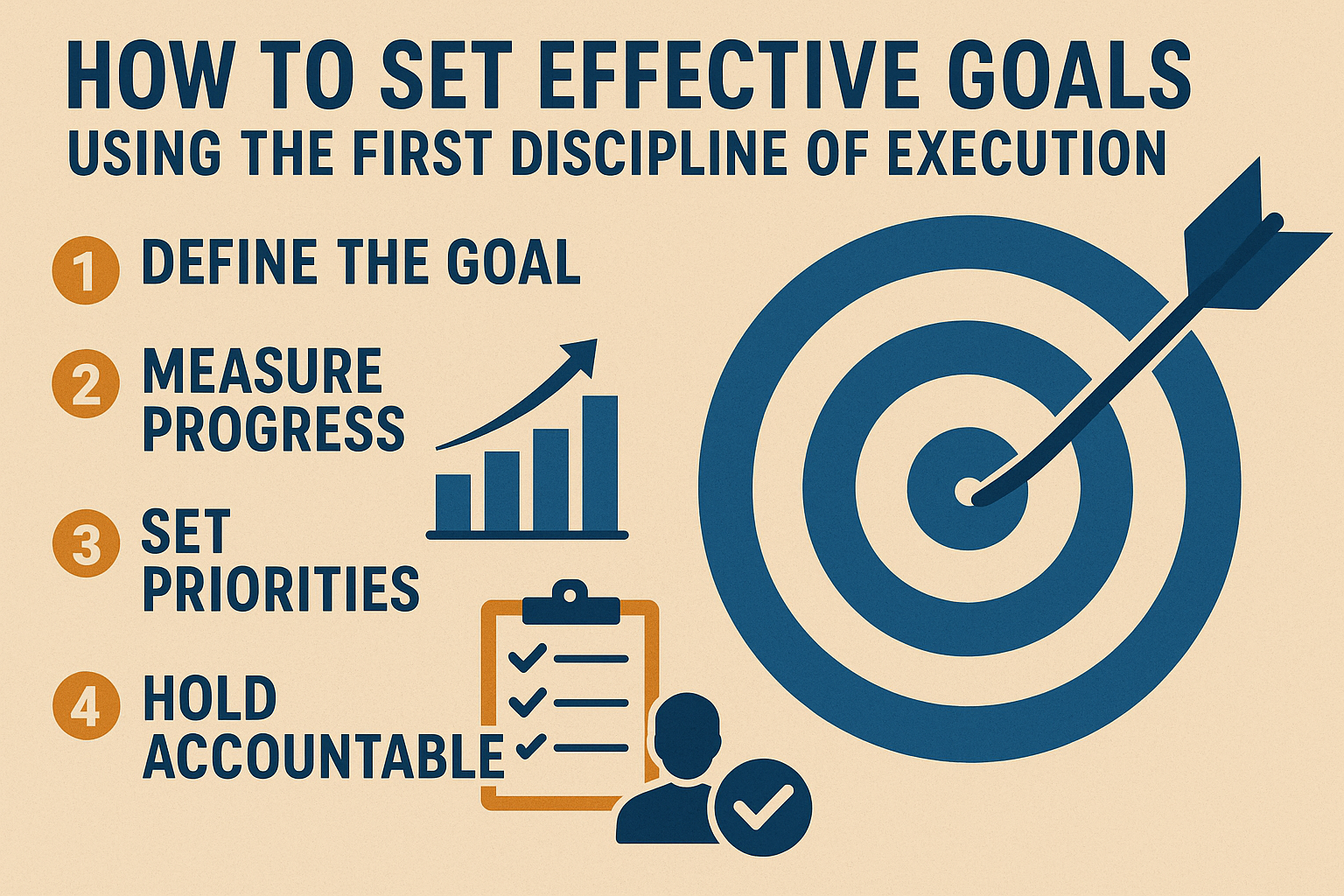Setting goals is easy. Achieving them consistently is where most people fail. The first discipline of execution, Focus on the Wildly Important Goal (WIG), offers a powerful way to stop chasing too many objectives and start winning where it truly matters. In this article, you’ll learn how to apply this discipline to set meaningful, actionable goals that drive results in both your personal and professional life.
Why Most Goals Fail
We often create long to-do lists or make New Year’s resolutions filled with ambition—but a few months in, most of those goals have faded. The problem isn’t motivation; it’s lack of focus and clarity. Trying to do too many things leads to scattered efforts and little progress. That’s where the first discipline of execution comes in.
What Is a Wildly Important Goal (WIG)?
A Wildly Important Goal is the one goal that will make the biggest difference. It’s not a list of goals. It’s a clear, singular priority that demands your energy, attention, and action.
According to the 4DX model:
“If you focus on two or three goals, you may accomplish two or three. If you focus on ten, you will accomplish none.”
WIGs are designed to cut through the whirlwind of day-to-day tasks and shine a spotlight on the one result that must happen, no matter what.
Characteristics of an Effective WIG
Not every goal can be a WIG. To serve its purpose, a Wildly Important Goal must be:
- Specific: It should clearly define what needs to be achieved.
- Measurable: You must be able to track progress and know when it’s completed.
- Time-bound: A deadline creates urgency and commitment.
- Influential: It should have a significant impact on your performance or outcome.
Examples:
- “Increase monthly sales by 20% in Q3”
- “Write and publish a 10-article blog series in 60 days”
- “Lose 5kg in 2 months through healthy routines”
How to Choose Your Wildly Important Goal
1. Ask the Right Questions
- What result would have the most positive impact right now?
- Which goal aligns best with my larger mission or vision?
- What am I most committed to achieving this quarter?
2. Evaluate Impact vs. Effort
Choose goals that offer high impact for reasonable effort. Avoid goals that are vague or require too many moving parts to get started.
3. Get Feedback
If you’re part of a team, align your WIG with collective objectives. Discuss and refine it together to ensure everyone is focused on the same priority.
Writing a Great WIG Statement
Use this simple format:
“From X to Y by [date].”
Examples:
- “Increase blog subscribers from 500 to 1,000 by August 31.”
- “Improve customer satisfaction score from 7.5 to 9.0 by Q4.”
This format creates clarity, urgency, and measurability.
Avoiding Common Mistakes
❌ Setting Too Many Goals
If you try to make everything a priority, nothing truly is. Focus on one WIG at a time.
❌ Choosing Goals That Aren’t Measurable
If you can’t measure it, you can’t manage it. Avoid vague goals like “Be more productive.”
❌ Focusing Only on Easy Wins
A WIG should stretch your capabilities. If it’s too easy, it won’t create real change.
❌ Setting Conflicting Goals
Make sure your WIG doesn’t compete with other efforts. It should unify and direct your actions, not scatter them.
Aligning Your WIG With Daily Habits
A WIG only works if it translates into action. Once you’ve defined your goal:
- Break it down into smaller steps.
- Identify the key behaviors (lead measures) that influence progress.
- Integrate those actions into your daily or weekly routine.
Example:
- WIG: “Publish 10 blog articles in 60 days.”
- Daily habit: “Write 500 words every morning before checking email.”
Tracking Progress
Don’t just set your WIG and forget it. Track your progress weekly. Use a simple checklist, journal, or spreadsheet to keep your eye on the goal.
Ask yourself:
- Am I on track to meet the deadline?
- What did I accomplish this week?
- What challenges did I face?
- What will I do differently next week?
The Power of Saying “No”
Once you commit to a Wildly Important Goal, it becomes easier to say “no” to distractions, non-essential tasks, or tempting shortcuts. Your WIG becomes a filter for decision-making. If something doesn’t serve the goal, skip it or delegate it.
Real-World Example
Let’s say you’re a freelancer aiming to scale your business.
- WIG: “Increase monthly client income from $2,000 to $4,000 in 90 days.”
- Lead measures: Pitch 10 new clients per week, publish a weekly blog post, attend 1 networking event per week.
- Tracking: Use a Google Sheet to mark activities and income weekly.
- Weekly review: Evaluate what worked, adjust what didn’t.
By focusing on this one goal, your energy is concentrated. Your progress becomes visible. And most importantly, you execute instead of just planning.
Move With Purpose
In a world filled with distractions and competing priorities, the first discipline of execution helps you move with intention. By choosing a Wildly Important Goal and giving it your focused attention, you create momentum, clarity, and long-term success.
Start by choosing your WIG today—and make it the driving force behind your actions.
